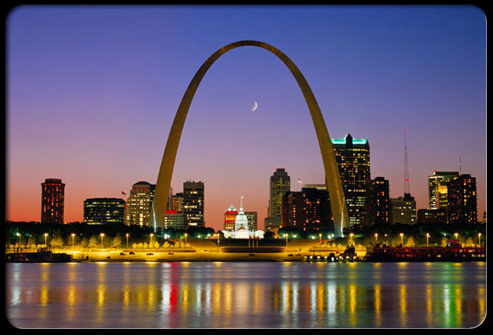 Choices we make every day impact our air quality and the health of our region. It’s true! We are in the middle of ozone season in St. Louis right now. The way you commute has a definite impact on our air quality. Have you ever considered giving transit a try? Riding the bus to work? Trying MetroLink for a trip downtown?
Choices we make every day impact our air quality and the health of our region. It’s true! We are in the middle of ozone season in St. Louis right now. The way you commute has a definite impact on our air quality. Have you ever considered giving transit a try? Riding the bus to work? Trying MetroLink for a trip downtown?
The St. Louis Regional Clean Air Partnership (which CMT is a member) puts out a daily air quality forecast – today’s forecast was yellow. As the temperatures continue to rise with no rain in sight, it is more than likely that this forecast will move to orange or even red.
Ozone is created when heat and sunlight react with hydrocarbons and nitrogen oxides that are emitted by automobiles, auto body shops, gas stations, organic solvents, and dozens of other sources. When all these mix, they form a ground-level layer of ozone, also known as smog. The resulting air pollution has negative health effects and makes our region less attractive for business growth. Children are most at risk from exposure to ozone because their lungs are still developing and they breathe more rapidly and inhale more air pollution per pound of body weight than adults. They also often breathe through their mouths, which mean the pollution bypasses the body’s first line of defense: the nose.
Asthma prevalence has increased by more than 75 percent in the last 12 years and is the leading chronic illness among children. The St. Louis Metro area has the highest rate of asthma hospitalizations and emergency room visits in Missouri.
What can you do to help clear the air?
Giving transit a try is one of the best ways St. Louisans can help to reduce air pollution and ozone. The most recent mobility study from the Texas Transportation Institute found that St. Louis area motorists spent over 32.9 million hours in traffic, wasted 20.6 million gallons of fuel and doled out $697 million in congestion costs in 2007 alone.
Two MetroLink tracks have the same capacity as 16 lanes of highway. A full MetroBus at rush hour removes 40 cars from the highway, and a full MetroLink train at rush hour removes 125 cars from the highway. In addition, according to the American Public Transit Association, families that reduce the number of cars they own by one can save more than $9,000 each year.
Getting on board transit is as simple as 1, 2, 3 . . .
First choose your destination and route – there are tools available at www.metrostlouis.org, on www.google.com under maps (click on the transit icon) for the transit routes, and at 314.231.2345.
Second, choose your fare – you can purchase your tickets for MetroLink at the stations, you can pay cash for any MetroBus, or you can purchase a monthly pass for unlimited rides on the transit system. More information on fares is available at www.metrostlouis.org.
Finally, sit back and relax. One of the best benefits of using transit is the ability to sit back and let Metro do the drivig.
Tina Totty, an Illinois resident, had this to say about her commute,”Today, I am in the Construction industry and still take it to my assigned job site (All over the Metro St Louis area). I have learn to use the commute as my “down time” to read, make To-Do lists, text/email friends/family I haven’t been able to spend time with. I lucked out in that that bus route I use goes right past a grocery store. I just hop off, get what I need, hop back on and head home. I breathe easier knowing I spend $70ish a month on a ALL INCLUSIVEn (EVERYDAY Bus/Train) Pass. It is SO MUCH better than spending $70ish a couple times a week to commute to/from wherever I need.”
Remember, giving transit a try is a great way for you to do your share for cleaner air in St. Louis. For more information on public transit issues in St. Louis, please visit www.cmt-stl.org
